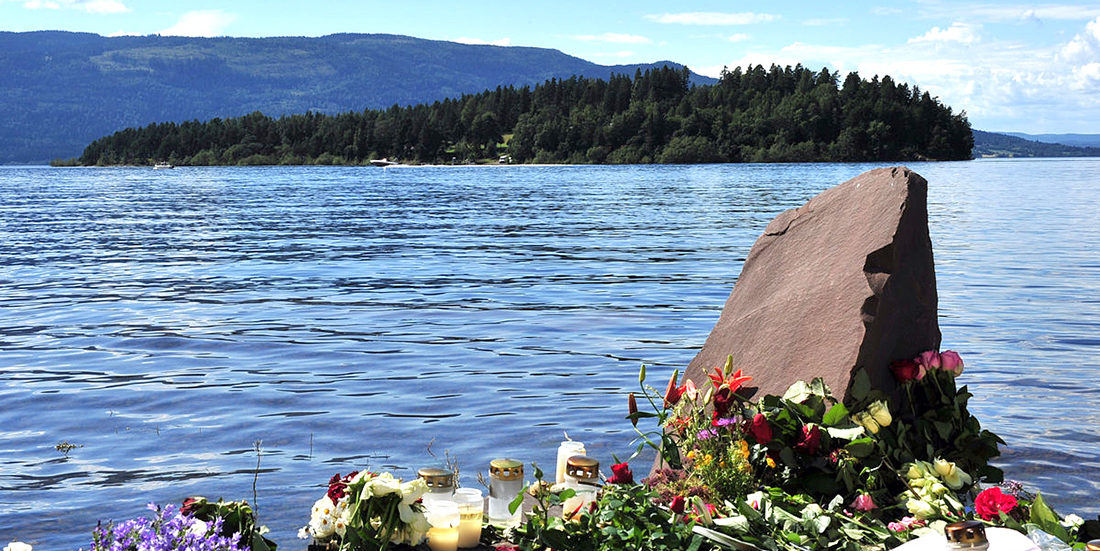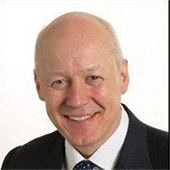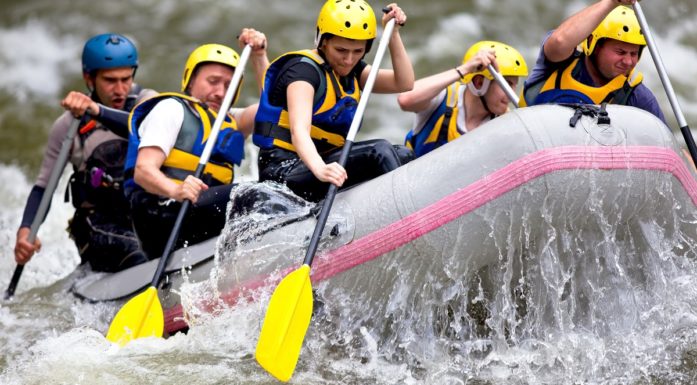Unpredictable disasters require new thinking
When the unthinkable happens and the unpredictable takes over, crises cannot be handled by the book. What should the police have actually done during the 2011 attack on the Norwegian island of Utøya?
22 July 2011: A terrorist attack in the government quarter has crippled Oslo, and reports of shooting on the island of Utøya are coming in. Desperate youths have already started swimming, and many of them are picked up by individuals in small boats.
The first police patrol arrives at the Utvika ferry dock opposite the island 44 minutes after the perpetrator landed on the island.
The patrol has been ordered to observe, and decides to wait for the emergency squad that they believe to be heading in by helicopter. But Police officers only arrive on Utøya 33 minutes later. At least 20 people are killed during the last quarter hour of the massacre on the island. All told, the attack by Anders Behring Breivik on Utøya and the government quarter killed 77 people, and was the deadliest attack on Norwegian soil since WWII.
Should police have violated the order?
Police received sharp criticism in the 22 July Commission report, which came out a year after the terrorist attacks. According to the Commission, the police officers who first arrived at Utvika should have immediately acted on their own, despite the fact that they had been ordered to observe what was happening.
“Police were strongly criticized in the report, but according to their existing procedures they actually did everything correctly,” says NTNU associate professor Endre Sjøvold at the Department of Industrial Economics and Technology Management.
“In retrospect,” he says, “we can see that maybe the police should allow their operational units greater autonomy in complex situations like this.”
Sjøvold has researched team dynamics and group processes for several decades, and over the past three years he has led the Innovative Teams project, which deals with managing operational situations where uncertainty predominates, and where the consequences could be great if something fails. He stresses that he has not studied the police conduct in the 2011 Norway attacks, but those attacks are good examples of issues that the project concerns itself with.
One of the results of the project is Norway’s – and Europe’s – first ICT-based educational program for operational leadership that incorporates the automated collection of interaction data. The program is geared to businesses where crises could have enormous social consequences – such as the Armed Forces and oil and power companies. The initiative’s continuing education and training offerings at NTNU are being established in collaboration with the Norwegian Agency for Digital Learning in Higher Education (Norgesuniversitetet), starting in 2017.
Unusual crises require different practices
Sjøvold’s research shows that traditional emergency work emphasizes fixed procedures and strong leadership, as is typically exemplified by the police force. People who do not know each other can form an effective crisis team since they know what to do and have their regular roles. The team leader has final authority.
“This may involve breaking certain procedures, if they hinder solving the task at hand.”
This kind of emergency team can be trained, enabling each employee to know exactly what he or she will do when a situation arises. Team members follow orders and concentrate on their specific task, which reduces stress.
This approach works in most emergency situations – but not when the unthinkable happens, as in the 2011 Norway attacks when chaos and unpredictability reigned and everything was turned upside down. That’s when the rigidity of traditional crisis management needs to be set aside.
But how do you get police patrols to break an order or change a procedure and do something completely different than the team leader has instructed them to do?
“After 22 July, the police were criticized and the hospital received kudos,” Sjøvold said. “But the police had faced a new and quite foreign situation, whereas the hospital was operating under more familiar conditions. Although the scale [of events] was bigger for the hospital, too, procedures were the same. Seen this way, I would say police were criticized a bit unfairly.”
Flexible protocols needed
He points out that as the international security paradigm has evolved in recent years, so have the views on what constitutes effective operational leadership. Traditional practices have focused on safety procedures and regulations on the one hand and teamwork and communication on the other. Despite disagreement about what is most important, it has become evident that neither rules nor communication training alone are sufficient, according to Sjøvold.
Evaluations of past events indicate that the scale of the disasters could have been reduced if the ability to make decisions locally had been greater.
Sjøvold adds that the increased use of advanced technology and virtual communication reinforces the need for more integrated training and flexible protocols. Offshore oil installations and structures that are managed through computer systems by land-based personnel are one example where this is needed.
Local decision making can help limit the scale of disasters
Evaluations of past events show that the scale of many disasters could have been reduced if local decision-making power had been greater – that is, if the part of the team that was closest to the situation had been involved in a different way. For a response to be effective, team members and leaders need to be able to read the situation correctly and act in accordance with the intent of the assignment.
According to Sjøvold, this may involve violating existing procedures, if they are a hindrance to solving the mission. “If we believe that only one type of team dynamics works in all situations, we’ll end up with teams that aren’t able to solve the most critical tasks,” he says.
Uncertainty in oil disaster
Gulf of Mexico, 20 April 2010: Everything was working as expected on Deepwater Horizon, the drilling rig that had recently been heralded for its security systems.
Suddenly an oil and gas blowout caused a huge explosion and fire on the rig, killing 11 workers. Two days later, the rig sank and triggered the largest oil spill in American history.
The subsequent investigation revealed considerable uncertainty around crew authority and roles, although these were clearly defined in the written procedures.
- One of the two rig officers was in the shower when the accident occurred, which delayed the emergency response efforts for several minutes. The procedures required that both officers take the decision on what should be done.
- When a young bridge officer on board signalled MAYDAY because she noticed that this had not been done, she was reprimanded by the captain.
- An emergency system to shut off the well was only triggered 12 minutes after the accident. The operation was delayed by a rule that said the highest-ranking officer present had to give the permission. On that day that officer was an onshore office employee who happened to be on a rare visit to the rig.
Mobilize the whole team
Kenneth Stålsett wrote his doctoral dissertation on teams and team dynamics in changing and uncertain settings, as part of NTNU’s Innovative Teams project. His doctoral work included a study on the oil industry, where he looked at switching between routine and crisis operations. Stålsett has also conducted several studies on interactions, group dynamics and leadership in the Royal Norwegian Naval Academy operations.
Paradoxically, authoritarian leadership with centralized decision making is considered “military”, even though the Norwegian Armed Forces introduced decentralized leadership in the early 1990s. So the military’s approach, which bases leadership on operational context, is not anything new.
Stålsett points out that several other industries, like the oil industry, also practice this form of leadership to some degree, but they tend to revert to a “command and control” management style when a crisis situation arises.
“For example,” he says, “we find that when the alarm goes off on an oil platform, employees are put under extreme mental and physical stress and instinctively follow what they’re trained to do. In that case, it’s drill and practice that prevails, and that in turn makes it difficult to adapt to new and changing situations.”
Stålsett stresses that training in breaking out of routines is also needed for these kinds of operations.
“That’s when something you’ve never trained for actually happens, and you have to mobilize the power of all the team members, not just the strong leader. You can’t see the leader as an isolated entity. To have a good leader, all the team players need to assist and take on their share of leadership. This is exactly what the special forces and the Naval Academy do so well,” he says.
Must challenge leadership
A good emergency response team therefore has to be able to change group dynamics when the situation demands it. A team that is just drilled in routines won’t develop this capability.
“Most of the time we’re used to being in groups with strong leaders, so this isn’t necessarily easy to unlearn. In some cases it isn’t the group leader who has the most influence. Influence sometimes coincides with social patterns rather than a formal title,” Stålsett adds.
So how does one train for this more distributive leadership approach? It requires a team that works together, dares to ask questions and gives constructive criticism, according to Stålsett. This doesn’t just apply to the oil industry and the military.
Imagine a regular meeting room where a project group or staff members are sitting. It’s usually the ones who talk the loudest that get their way.
“Expertise is highly valued and as a rule one is expected to go along with the expert in a field. Experts tend to be right, but we can arrive at a better solution when we manage to add nuances. And experts aren’t always right either, so we have to be able to challenge each other in an objective manner. Innovative solutions emerge when different areas of knowledge are brought together and combined,” says Stålsett.





